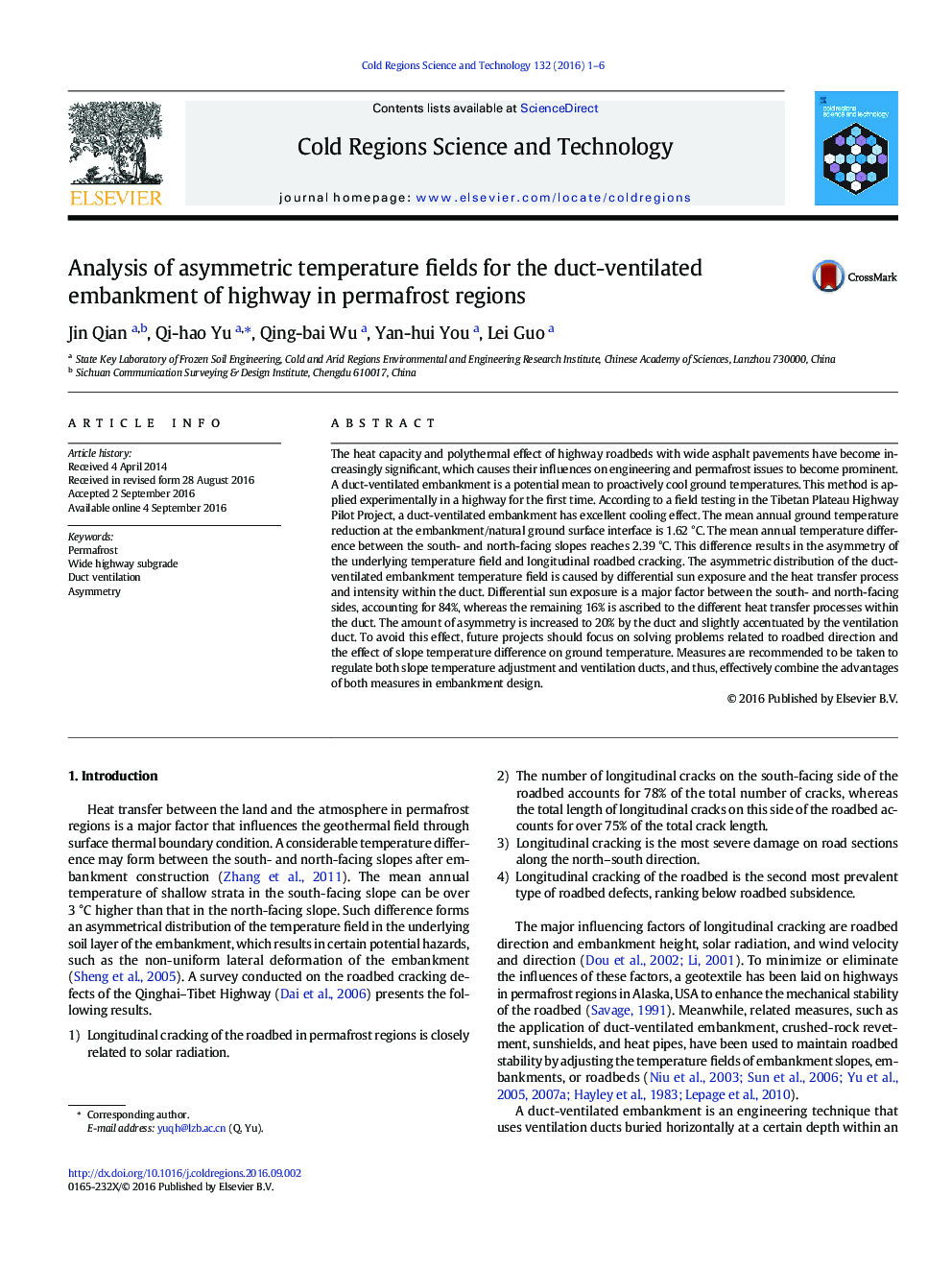| Article ID | Journal | Published Year | Pages | File Type |
|---|---|---|---|---|
| 4675599 | Cold Regions Science and Technology | 2016 | 6 Pages |
•The duct-ventilation embankment is suggested for Qinghai-Tibet highway.•This embankment has cooling effect, but there is asymmetric temperature field.•The change rule of airflow in duct ventilation is got for the first time.•The asymmetric temperature field is caused by sun exposure and heat exchange.•The sun exposure is major factor, the heat exchange is secondary factor.
The heat capacity and polythermal effect of highway roadbeds with wide asphalt pavements have become increasingly significant, which causes their influences on engineering and permafrost issues to become prominent. A duct-ventilated embankment is a potential mean to proactively cool ground temperatures. This method is applied experimentally in a highway for the first time. According to a field testing in the Tibetan Plateau Highway Pilot Project, a duct-ventilated embankment has excellent cooling effect. The mean annual ground temperature reduction at the embankment/natural ground surface interface is 1.62 °C. The mean annual temperature difference between the south- and north-facing slopes reaches 2.39 °C. This difference results in the asymmetry of the underlying temperature field and longitudinal roadbed cracking. The asymmetric distribution of the duct-ventilated embankment temperature field is caused by differential sun exposure and the heat transfer process and intensity within the duct. Differential sun exposure is a major factor between the south- and north-facing sides, accounting for 84%, whereas the remaining 16% is ascribed to the different heat transfer processes within the duct. The amount of asymmetry is increased to 20% by the duct and slightly accentuated by the ventilation duct. To avoid this effect, future projects should focus on solving problems related to roadbed direction and the effect of slope temperature difference on ground temperature. Measures are recommended to be taken to regulate both slope temperature adjustment and ventilation ducts, and thus, effectively combine the advantages of both measures in embankment design.
